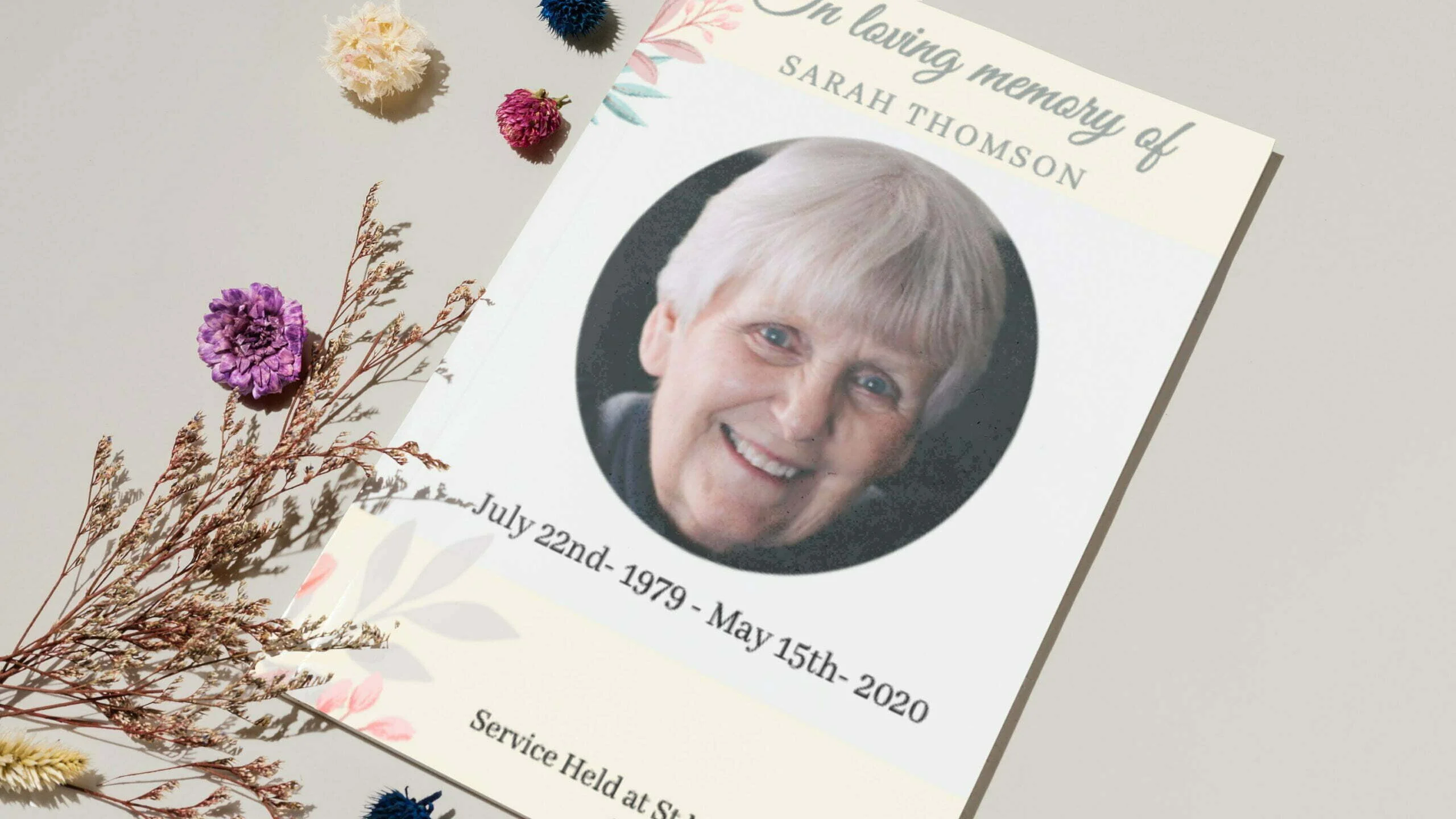A Funeral Order of Service, also known as an Order of Funeral, is a critical document that serves various important functions during a funeral service. It provides attendees with essential information and guidance, creating a sense of order and reverence. This article explores the purpose of a Funeral Order of Service and delves into what it typically includes.
I. A Guiding Light in Times of Grief In the midst of grief and mourning, a Funeral Order of Service stands as a guiding light, offering structure and solace to both the bereaved family and the attendees. It provides a clear roadmap for the proceedings, ensuring that the service proceeds smoothly and respectfully.
II. Personalization and Tribute
III. Essential Contents of a Funeral Order of Service A Funeral Order of Service typically includes a set of essential components that are vital for a well-organized and meaningful service. This section breaks down these components, explaining their significance and how they contribute to the overall service.
IV. Design and Printing The design and printing of a Funeral Order of Service are often overlooked aspects that play a significant role in creating a lasting memorial. This section provides insights into the design considerations and the printing process, ensuring that the document is a fitting tribute to the departed.
V. Conclusion In the final section, we reflect on the overall significance of a Funeral Order of Service and how it serves as a cherished keepsake for the bereaved family and attendees.

I. A Guiding Light in Times of Grief
In the midst of mourning and emotional distress, a Funeral Order of Service offers a sense of structure and guidance that is invaluable. It helps the attendees understand what to expect, provides an outline of the proceedings, and ensures that the service runs smoothly. Here are some key aspects of how it serves as a guiding light:
Clear Outline: The Order of Service typically begins with a clear outline of the funeral service.
Readings and Eulogies: The names of individuals who will be delivering readings or eulogies are mentioned, along with the titles of the pieces they will share. This helps in coordinating the timing and flow of the service.
Prayers and Scripture: For religious funerals, the Order of Service may include prayers and scripture passages. Knowing what will be read or recited can be comforting for attendees who wish to follow along.
Acknowledgment of Special Guests: Sometimes, special guests or dignitaries are present at a funeral. The Order of Service may acknowledge their presence, which adds a touch of formality to the event.
Memorial Contributions: Information about any memorial contributions, such as donations to a charitable organization, can be included in the Order of Service. This allows attendees to contribute to a cause in memory of the departed.
II. Personalization and Tribute
A Funeral Order of Service also serves as a platform for personalization and tribute.
Photographs: Including photographs of the departed can be a powerful way to personalize the document. These images provide a visual connection to the person being celebrated.
Biographical Information: A brief biography or life summary can be included, highlighting key milestones, achievements, and personal anecdotes. This adds a personal touch to the service.
Favorite Quotes or Passages: If the deceased had favorite quotes, passages from books, or inspirational sayings, these can be integrated into the Order of Service to convey their values and beliefs.
Custom Artwork or Symbols: Custom artwork or symbols that held significance to the departed can be incorporated into the design. This can include religious symbols, hobbies, or other meaningful imagery.
Tribute Messages: Family and friends can contribute short tribute messages or remembrances that are included in the document. This allows attendees to gain a deeper understanding of the person's impact on their lives.
III. Essential Contents of a Funeral Order of Service
A Funeral Order of Service typically includes a set of essential components that are vital for a well-organized and meaningful service.
Welcome and Introduction: A welcome message is included, setting the tone for the service and expressing gratitude for attendees' presence.
Order of Service: This outlines the sequence of events, including hymns, readings, eulogies, and any other activities.
Lyrics and Readings: The lyrics to hymns and the texts of readings, poems, or eulogies are typically included, allowing attendees to follow along.
Acknowledgments: This section may express gratitude to those who provided support during the grieving process or helped organize the service.
Prayers and Scriptures: If the service is religious, it may feature prayers, scripture passages, or religious texts.
Obituary or Biography: A brief obituary or biography provides a snapshot of the deceased's life and achievements.
Tribute Messages: Space for family and friends to share tribute messages, memories, or personal reflections.
Closing Remarks: Closing remarks often convey final thoughts and appreciation for attendees' presence.
Details for the Reception: Information about any post-funeral gathering, such as a reception or meal, can be included.
IV. Design and Printing

The design and printing of a Funeral Order of Service are essential considerations, as they contribute to the document's aesthetics and overall impact.
Professional Printing: For a polished look, consider professional printing services. High-quality paper and printing techniques can make a significant difference.
Photographs: Ensure that any photographs are of good quality and well-reproduced in the document.
Customization: Many printing services offer customization options, allowing you to choose the size, format, and style of the Order of Service.
Proofreading: Carefully proofread the content to avoid errors, as this document is a lasting memento.
Distribution: Plan how the orders of service funeral will be distributed at the funeral. They are often placed on seats or handed out as attendees arrive.
V. Conclusion
In conclusion, a Funeral Order of Service plays a multifaceted role in a funeral service. It provides structure and guidance, allows for personalization and tribute, and includes essential content for a well-organized service. The design and printing






